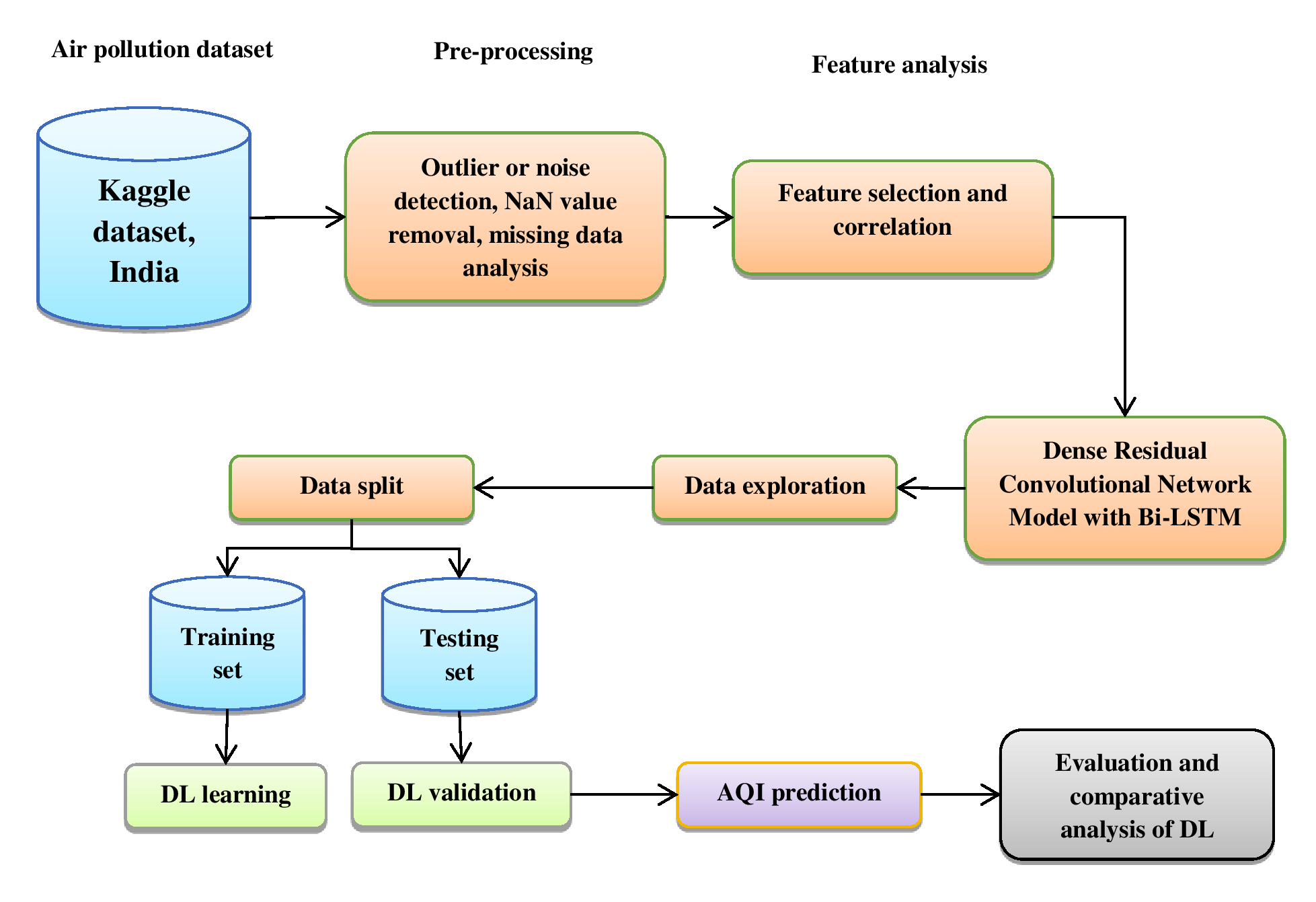
With the technical advancements in Deep Learning (DL), it is probable to construct the predictor model for monitoring and controlling pollution from real-time data. Here, IoT techniques are used for sensing the emission rate from various factors and the predictor model is constructed using the available data, for instance, carbon monoxide prediction. Modern sensors are embedded to evaluate the level of pollutants and using these modern techniques, the source of emission rate is identified and notified to the specific environment. Deep learning concepts are used for predicting the pollution level based on the current and previous data attained from the sensors. Here, we have implemented a learning solution to predict carbon monoxide concentration hourly using the novel Dense Residual Convolutional Network Model with Bi-LSTM (Bidirection-Long Short Term Memory) with the spatial and temporal features by integrating the features of the present and previous pollutant data. The side output from the residual network model is used to evaluate prediction quality. The performance is compared with existing approaches like standard LSTM, CNN, pre-trained network model, etc. The experimentation is done in a Python environment, and the proposed model facilitates more prediction accuracy for the pollutants CO,SO_2,O_3 and NO_2 than other conventional network models and establishes a better trade-off.
Total file downloads: 29